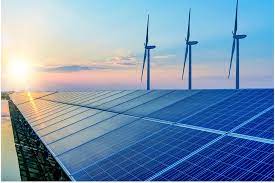
You don’t need to install a wind turbine on your roof to start reducing emissions and lowering energy costs. It’s often the simpler changes—the things you can control daily—that make the biggest impact. And for Aussie retailers running lean, the good news is this: slashing emissions doesn’t have to come with a price tag. In fact, if done right, it can seriously help reduce retail store energy bills.
Can you really cut carbon and costs at the same time?
Yes, you can. The idea that sustainability always costs more is outdated. What we’ve seen—especially over the last five years—is that smarter energy use often means less spending. Less waste, fewer surprises on your bill, and smaller emissions footprints go hand-in-hand.
At the heart of this shift? Visibility and small changes made consistently. One small biz owner in Bendigo told us their energy bill dropped by 22% after installing LED lighting and reviewing their heating schedule. They didn’t call it a climate strategy—but it worked like one.
What are the most effective ways to lower emissions in retail?
Retail spaces chew through energy differently than warehouses or offices. Here’s where you can get the biggest bang for your buck (and carbon):
1. Switch to high-efficiency lighting
- LEDs use up to 80% less power than traditional bulbs.
- They last longer, reducing maintenance costs.
- Cool lighting reduces demand on air conditioning.
2. Smarter HVAC use
- Review thermostat settings regularly.
- Clean filters monthly—clogged units draw more energy.
- Use zoning if available (no need to cool unused stockrooms).
3. Embrace power timers and sensors
Motion sensors in low-traffic areas like backrooms and staff kitchens can make a noticeable dent in overnight consumption. One Brisbane florist reported saving over $700 annually after installing six simple sensors.
4. Review your refrigeration
This one’s huge for grocers, delis and florists. Fridges and freezers are constant users. Ensure:
- Gaskets are intact.
- Fans aren’t blocked.
- Night blinds are used (for open units).
- Units are spaced to allow airflow.
A Sydney convenience store cut emissions and costs by simply upgrading a 15-year-old display fridge to a newer, energy-rated model. Return on investment? Just over 18 months.
How can energy data help track emissions?
Here’s the truth: you can’t manage what you can’t measure.
That’s where energy dashboards and smart meters come in. These tools provide real-time insights into your usage patterns, which helps pinpoint where carbon-intensive energy is being wasted. Over time, this visibility helps you:
- Spot unusual spikes (maybe the aircon’s running overnight)
- Compare locations or seasons
- Understand peak demand periods (which often carry higher carbon intensity)
And this isn’t just about numbers on a screen. It’s about creating consistency, one of Cialdini’s most powerful persuasion principles. When staff see energy data daily, they’re more likely to stay energy-aware.
Does switching to renewables make a difference?
If your budget allows, absolutely. Even small businesses now have access to GreenPower plans through major providers. These plans offset your energy usage with certified renewable energy generation—without needing rooftop solar.
For those who can install solar, the benefit is twofold:
- You reduce reliance on carbon-heavy grid energy.
- You shrink your bills over time, especially with battery backup.
Plenty of small retailers—especially in sun-rich areas like WA and northern NSW—are using solar to power their stores during trading hours. Some even feed excess back into the grid.
If solar isn’t an option? You can still push for transparency in your energy contract. Ask if your provider offers carbon tracking or emissions reporting.
What role does staff behaviour play?
A massive one.
You can invest in the fanciest systems, but if the team leaves the heater blasting with the door open, your emissions (and costs) go up. That’s why social proof—a concept where people follow the behaviour of others—is so effective in-store.
Retailers are seeing success with things like:
- “Energy Champion” staff awards
- Monthly team targets (e.g. reduce lighting after-hours by 20%)
- Displaying live energy use dashboards in break rooms
One bakery in Ballarat saved hundreds by encouraging a “switch-off” culture after staff noticed how often the oven was left idling between bakes.
What’s the benefit of cutting emissions beyond savings?
Besides the obvious environmental impact, emissions reduction is now a signal of credibility and professionalism.
Customers care. A recent Clean Energy Council survey found that 72% of Australians prefer shopping with businesses committed to sustainability. That’s not fluff—that’s future market value.
And for larger retailers or franchises, emissions tracking is now often required for reporting. Investors, suppliers, and councils are increasingly asking: What are you doing about your footprint?
Quick wins to get started
You don’t need a six-month plan to start making a difference. Try:
- Replacing halogen bulbs with LEDs
- Adjusting HVAC timers to match trading hours
- Cleaning fridge coils and seals
- Checking your provider’s GreenPower options
- Reviewing your last three energy bills—any odd spikes?
These steps are low-cost, often low-effort, and instantly improve both emissions and expenses.
FAQ: Emissions & energy costs in retail
Q: Is energy efficiency the same as emissions reduction?
A: Not always, but they’re closely linked. Using less energy reduces emissions—especially if your energy comes from fossil fuels.
Q: Can I track carbon emissions in my bills?
A: Some providers offer estimates or dashboards showing emissions intensity. If not, third-party tools can help.
Q: Is offsetting a good option?
A: Carbon offsetting can help, but it’s better to reduce first, offset second. It’s more credible and cost-effective that way.
Final thought: Small changes, lasting impact
You don’t have to overhaul your operations to cut emissions. You just need to start. The best results often come from paying attention to everyday habits—switches, settings, schedules.
And if you do it right, you’ll reduce retail store energy bills as a welcome side effect.
